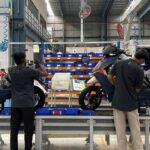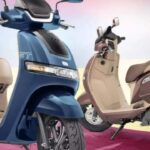Uber, who leads India’s Ride-Helling Market, is about 1.4 million drivers partners, which are more than 2 million in 224 and reflects a stable demand increase.
“In India, three of each of the five every five are now on two-wheel or three wheels,” Uber India and South Asia President Prabhjit Singh told ET. He was speaking in favor of the Uber Prague program in Mumbai.
According to him, an important driver of this infection is the increasing demand for affordable and elastic transport, especially in urban and semi-productive areas. Singh said the “grand growth” supported by new product innovation and affordable features in categories such as intercity, airport travel and premium offers.
Although these are extended in multiple use cases, Uber’s electrification efforts remain moderate. The company operates 25,000 electric vehicles (EVs) in the range of two-, three-, four wheel, which has less than 2% of the 1.4 million active vehicles in Indians.
“EV adoption is increasing, but access to me is less than me,” Singh said. He pointed to obstacles with high finance costs, obscure residual value of EVs and uncontrolled charging infrastructure as the transmission is reduced. According to Singh, India’s EV ecosystem is still evolving and the cost of ownership of vehicles is a barrier. He said, “One has to buy property and deploy on the platform. It is more difficult for EVS,” he said. To navigate these challenges, Uber is participating with an institutional flat operator who has invested in a vehicle and charging network. Its Uber Green Service, which offers EV Rides, is currently working in three Indian sites. India is Uber’s third largest market globally. For further growth, the company has launched new services when the EV adoption is a long-term goal, Uber is currently focusing on enhancing access through low-cost, high-range mobility options, Singh said.
.











